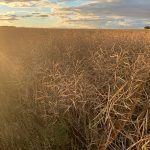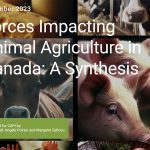Tag Archives Canadian Agri-Food Policy Institute — page 2

‘This isn’t going to go away’

China’s food market presents both opportunity and risk
University of Guelph academic takes a look at what history says about managing China’s market potential and politics
China provides risk and reward for Canadian agriculture exporters. With rhetoric escalating around the world, the risk could become a greater challenge. With Russia’s full-scale invasion of Ukraine, the Houthis taking potshots at shipping vessels in the Red Sea, and China increasingly aggressive in the Indo-Pacific, war and near-kinetic levels of conflict have thrown several […] Read more
New report highlights optimism, resignation in ag sector
Canadian Agri-Food Policy Institute and Global Institute for Food Security find a lack of confidence in government
Glacier FarmMedia – Concerns about a troublesome policy and regulatory environment, extreme weather and trade barriers keep Canadian agriculture professionals awake at night. That’s according to a joint report from the Canadian Agri-Food Policy Institute (CAPI) and the University of Saskatchewan’s Global Institute for Food Security on risks in Canada’s agrifood system. The report provides […] Read more
Growing season grows longer

Emissions focus worries ag sector

New focus called gov’t blind spot
Difficulties have been reported finding matching federal funding for research projects that address significant problems in crop production
OTTAWA — The federal government is like a cyclops with a giant blind spot when it comes to research funding, farm organizations, researchers and the agriculture industry have found. Agronomic crop research is a key way to improve agricultural sustainability and reduce carbon emissions but if such research isn’t related to climate change, the government […] Read more
What will it take to realize the promise of digital agriculture?
Canada is positioned to lead in this technology sector but is hampered by scattered funding and information sources
Digital agriculture can help Canada’s farms manage the increasing pressure to produce food, minimize environmental impact and provide a living for farmers, but only if scattered research dollars and talent are brought together. “We need to do a lot better if we want a food system that is more productive, that is more sustainable, and […] Read more
European farmers have not embraced green policies
International trade observer points out complex relationship between the EU and its national governments and producers
REGINA — The push for more sustainable agriculture policies in Europe is accentuating the complex relationship between member states and the European Commission, said a trade expert based in Brussels. Christina Kaul from Trade-Up, a network of international trade experts, said North Americans might view the EU as one big block but there is tremendous […] Read more
Online mapping tool offers land use information
The application developed for CAPI creates maps and datasets that can show change over time and help inform policy
REGINA — A new online tool allows users to examine agricultural land use across the country. Developed by ALCES for the Canadian Agri-Food Policy Institute, the Agriculture Web Mapping Application Tool offers maps and datasets about land use, management practices and agri-environmental indicators. Census, crop production and land use data can be viewed individually or […] Read more
Report cites animal ag’s importance
A new study explores the close connection between animal agriculture in Canada and the day-to-day life of its residents
MEDICINE HAT, Alta. — A new report for the Canadian Agri-Food Policy Institute seeks to educate policymakers about the impact that animal agriculture has at the economic, social and environmental levels. The report, called Forces Impacting Animal Agriculture In Canada: A Synthesis, delves into the issues surrounding beef, dairy and poultry production in the country […] Read more


